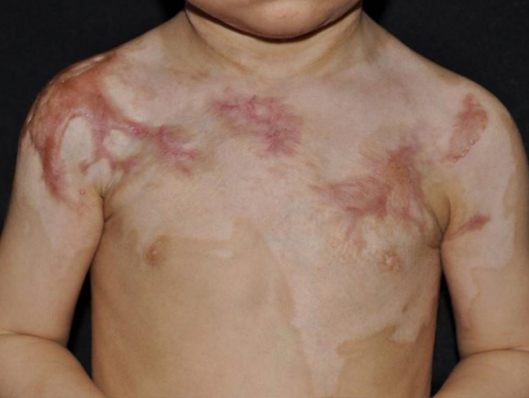
“Post-burn deformities” refer to physical abnormalities or alterations in the appearance and function of the body that result from burns. Burns can cause damage to the skin and underlying tissues, leading to scarring and changes in the affected area. Post-burn deformities can vary widely depending on the severity and location of the burn, as well as the effectiveness of the initial treatment.
Common post-burn deformities may include:
Scarring: Burns often result in scar formation. The extent and appearance of scars depend on factors such as the depth of the burn, the location on the body, and how well the wound heals.
Contractures: Scar tissue can lead to contractures, where the skin tightens and restricts the normal range of motion of joints. This can impact mobility and function.
Hypertrophic Scars: Raised and thickened scars known as hypertrophic scars can develop after burns, causing cosmetic and functional concerns.
Keloids: In some cases, keloids, which are raised overgrowths of scar tissue, can form, extending beyond the original boundaries of the burn.
Discoloration: Burns can cause changes in skin pigmentation, resulting in areas of hypo- or hyperpigmentation.
Functional Impairments: Depending on the location of the burn and the extent of tissue damage, there may be functional impairments in affected areas. For example, burns to the hands or face may impact dexterity, vision, or speech.
Management of post-burn deformities often involves a multidisciplinary approach, including surgical interventions, physical therapy, and psychological support. Scar management techniques, reconstructive surgery, and therapeutic exercises may be employed to improve both the aesthetic and functional outcomes for individuals with post-burn deformities. Early and comprehensive treatment can play a crucial role in minimizing the impact of these deformities on a person’s quality of life.
Plastic Surgen , Dr. Sandeep Kansal is a consultant Plastic-cosmetic Surgeon in Meerut. He is currently practicing at , Kailashi Superspeciality , Lokpriya And Nuteema Hospital in Meerut.
Copyright © 2023 Dr Sandeepkansal. All Rights Reserved.